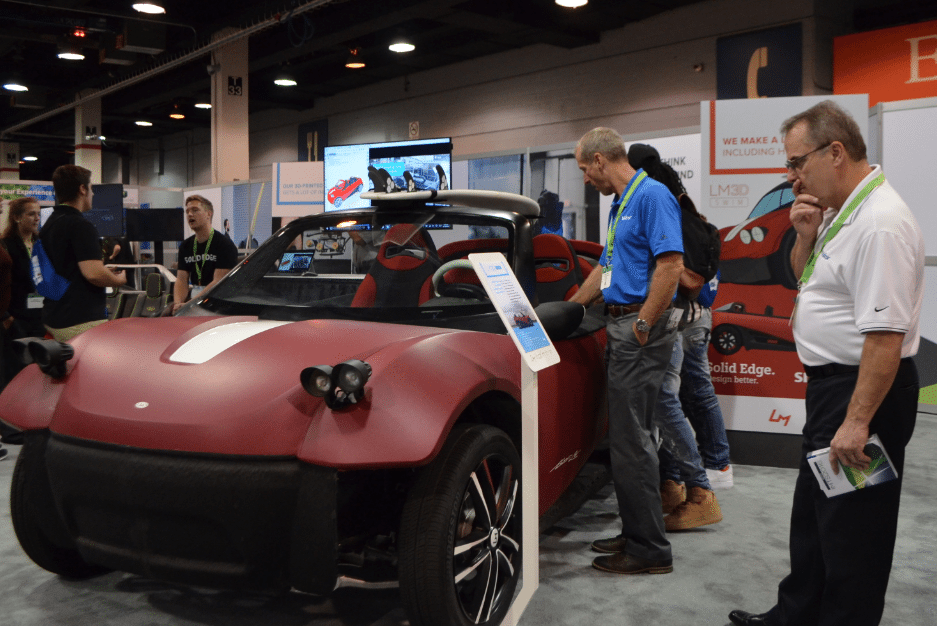Nothing brings the best out of people like a good challenge. I’m sure our UK readers remember the coveted Blue Peter challenge badges, and who isn’t a fan of the odd gameshow? When scaled up with higher stakes, like the HTC Vive VR up for grabs from the Autodesk Design by Capture competition, or multiple stages, as in Print the Future that will see 3D printed creations rocketed into space, the potential for true innovation increases. Thanks to the Essence of Autonomy Challenge from electronics distribution giants Mouser and Local Motors, we are now looking at a future where autonomous cars have a drone sidekick.
Gif via Mouser Electronics on Youtube. Shows the Fly Mode drone following self-driven car from Mouser & Local Motors – it makes the driver capable of taking pictures, examining traffic conditions, and playing a augmented reality game in the surrounding environment.
If there’s no need to physically drive the car, what else are you going to do?
As the innovators behind the world’s first 3D printed vehicle, Local Motors supported the competition in collaboration with Grant Imahara from Mythbusters, and the end product is a tech-junkie’s dream. With Mouser’s autonomous driving software, a 3D printed chassis from Local Motors, and the dream of Rhode Island designer Finn Yonkers, car ‘drivers’ can pilot their own traffic searching, sightseeing, game-playing copter drone named Fly Mode. Speaking on his inspiration for the invention, Yonkers says,
The main thing with Fly Mode is I wanted to kind of flip the notion of autonomy on its side, so by introducing the element of flight, you are actually increasing the sensory experience of travel.
Imahara added that it makes the experience of riding a car more interactive, and demonstrated the tech by testing it in ‘real world’ situations such as a traffic jam, and cruising along the coast. You can check out a video of their full test drive below.
Looking to the future
Though possibly seeming superficial at first glance, competitions such as the Essence of Autonomy are actually contributing to solving some of the world’s greater challenges such as Global Warming. Opening up design to a wider community of people with a range of skillsets and knowledge is surely a better way of finding a solution to the world’s bigger problems.
Earlier this year, Local Motors impressed the 115,612 strong visitors to Chicago’s IMTS 2016 with an upgraded version of their 3D Printed Car Strati that was first shown in 2014. The LM3D model (pictured below) is Local Motors’ next step in their self-imposed challenge to develop a 3D printed car that exceeds all 500 of the Federal Motor Vehicle Safety Standards (FMVSS) by 2017.

Furthermore, at the Wired Next Generation conference 2016 which took place in London last week, new automotive company Charge revealed its self-driving trucks, with plans to open their first factory in Oxfordshire, UK in 2017. The vans are environmentally friendly and significantly cut down on the time and cost of traditional manufacturing.

The promise of advanced manufacturing, distributed design networks and autonomous electric vehicles is to lead us to a cleaner, more open society with opportunities open to anyone with ideas rather than limited to those lucky enough to be in possession advanced tools. Consider this challenge accepted.
Featured image shows Fly Mode concept design by Finn Yonkers. Via: finnyonkers.com



